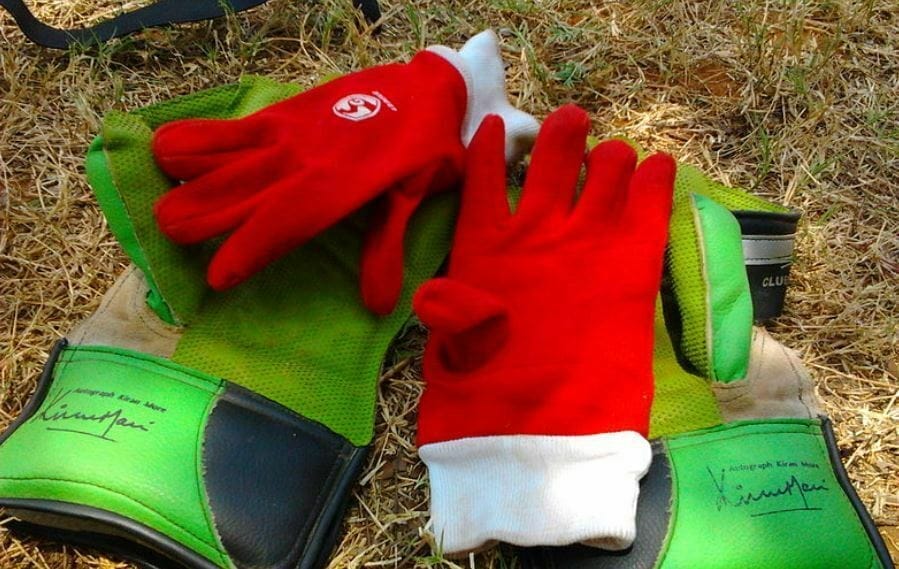Image: By Aravind Sivaraj (Own work) [CC BY-SA 3.0 (http://creativecommons.org/licenses/by-sa/3.0)], via Wikimedia Commons
New Zealand had an interesting selection quandary in the second Test against England at Headingley. First choice wicketkeeper B-J Watling had been injured in the first game at Lord’s and was not passed fit to perform behind the stumps. This is an area where the Kiwis have an embarrassment of riches. Brendon McCullum used to be the regular keeper while Tom Latham did a sound job at Lord’s in place of Watling. But the vote went to designated stand-in Luke Ronchi, whose only previous international cricket had been played for Australia,while Watling played as a specialist batsman . So New Zealand had both their regular keepers in the side ( only one of whom , incidentally , was born in New Zealand and has always been a regular keeper: you got it, Ronchi).
Both ended up having terrific games in New Zealand ‘s historic victory..Ronchi had a difficult time behind the stumps but made 88 off 70 balls in a startling debut innings while Watling’s beautifully crafted second innings century helped shape the match.
The job of reserve keeper has often been a frustrating one on tour. In the “old days” you would at least get some cricket. When Tim Zoehrer understudied for Ian Healy in the Ashes tour in 1993 he played eight first- class matches; when Matthew Wade fulfilled the same role for Brad Haddin in 2013 he played one. It is difficult to say whether things have got better or worse since tours have got shorter and – but? – more intense. Ronchi is lucky in that Watling is a red ball specialist : international duties were always going to be shared. More often than not the reserve is just that, waiting half in dread and half in eagerness for a loss of form or fitness by the main man – as happened to Matt Prior in Australia in 2013-14 when Jonny Bairstow replaced him for the last two Tess.
But, on the whole, wicketkeepers don’t lose form and fitness. They just go on and on. Think of Godfrey Evans and Alan Knott, Dave Richardson and Mark Boucher, Rodney Marsh, Ian Healy and Adam Gilchrist, ( here’s a little question for you : in his 145 – Test career Shane Warne was kept to by three wicketkeepers: Healy, Gilchrist and…?)*
Evans was a classic example. He was a major figure in English cricket for over a decade , a fixture in a genuinely strong side. He held spectacular catches and had the sort of ebullient and chivvying personality that captains love to have behind the stumps. By the time Evans finished, in 1959, his 91 Tests made him the most capped Test cricketer in the world. ( He was overtaken by Colin Cowdrey in 1967; currently England’s most capped player is Alec Stewart. Another wicketkeeper batsman , with 133, well behind Sachin Tendulkar’s 200.)
One thing Evans was not required to do was make runs. He would bat at eight and if he made runs that was a bonus. Of course there were wicketkeepers who were good batsmen : England’s Les Ames ( the only wicketkeeper to make a hundred first-class centuries), Clyde Walcott of the West Indies – a real all-rounder, the only man to have taken at least ten wickets and made ten stumpings in Tests – Imtiaz Ahmed of Pakistan , John Waite of South Africa, Faroukh Engineer of India. But in recent years it has been a different story. The keeper has to get runs. Jim Parks of England was an early example of a batsman who turned himself into a keeper . It was Gilchrist who really broke the mould. Now everyone wants a Gilchrist and ideally two , just in case the first one gets injured.
Back in 1993 on that Ashes tour of England there were 21 first – class matches , including six Tests. Healy played sixteen and Zoehrer eight. Surely shome mishtake, I hear you say. No, Zoehrer was an accomplished leg- spinner; in fact he headed the tourists’ bowling averages though his chances of replacing Warne in that year, of all years, were even more remote than his chances of replacing Healy.
Usually – at least historically- you couldn’t rely on the reserve keeper to bat , let alone bowl. That is why the Watling – Ronchi situation is so unusual. There are precedents but not inspiring ones. In Australia in 1950-51 Evans’ deputy , Arthur MacIntyre , was picked as a specialist batsman in the first Test, a nightmarish game for batsmen played on a Brisbane “sticky dog”. England lost heavily ,MacIntyre was bowled for one in the first innings and ran himself in the second for seven.
The third Test between England and India in 1967 at Edgbaston was memorable principally as being the only time all four of India’s great spin quartet – Eripalli Prasanna, Bhagwat Chandrasekhar, Bishan Bedi and S Venkataraghavan – all played in the same Test. Less often remembered is that both India’s keepers played – Engineer and ” Budi” Kunderan. Kunderan opened the batting and, more implausibly , the bowling : they must have drawn lots in the dressing room.
The classic reserve wicketkeeper , though, was Bob Taylor. He travelled the world as Knott’s understudy , wondering when he would get his opportunity; it came when Knott joined World Series Cricket.
Keith Andrew was another. For much of the 1950s and 1960s he was thought by the experts to be the best keeper in England: sounder and more technically proficient than Evans though lacking the latter’s flair.
Andrew’s big chance came on Len Hutton’s tour of Australia in 1954-55. Evans was injured just before the first Test in Brisbane. Hutton won the toss and put the Australians in ( Nasser Hussain did the same thing almost fifty years later.). In Alec Bedser’s third over opener Arthur Morris flicked a ball down the leg side and Andrew dived for a very difficult chance.
It didn’t stick. Morris went on to make 153, Australia scored 601 for 8 and won by an innings.
England went on to win the series, , Evans playing a key role.
Andrew played his second and last Test in 1963.
Bill Ricquier, 3/6/2015
*Phil Emery played one Test for Australia against Pakistan in 1994 when Ian Healy was injured.
The article was featured in the The Sunday Leader: http://www.thesundayleader.lk/2015/06/07/the-gloves-are-off-and-on-and-off/




